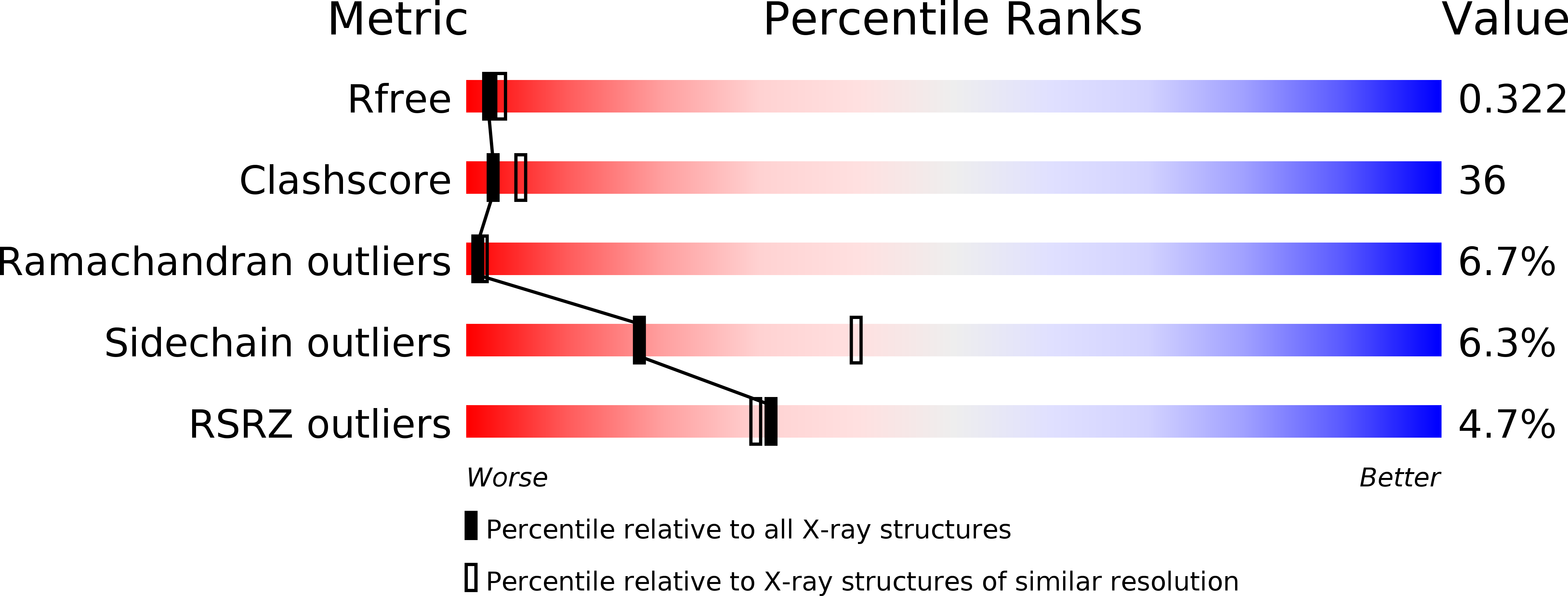Crystal Structure of a Tetrameric Type II beta-Carbonic Anhydrase from the Pathogenic BacteriumBurkholderia pseudomallei.
Angeli, A., Ferraroni, M., Pinteala, M., Maier, S.S., Simionescu, B.C., Carta, F., Del Prete, S., Capasso, C., Supuran, C.T.(2020) Molecules 25
- PubMed: 32408533
- DOI: https://doi.org/10.3390/molecules25102269
- Primary Citation of Related Structures:
6YJN, 6YL7 - PubMed Abstract:
Carbonic anhydrase (CA) is a zinc enzyme that catalyzes the reversible conversion of carbon dioxide to bicarbonate and proton. Currently, CA inhibitors are widely used as antiglaucoma, anticancer, and anti-obesity drugs and for the treatment of neurological disorders. Recently, the potential use of CA inhibitors to fight infections caused by protozoa, fungi, and bacteria has emerged as a new research line. In this article, the X-ray crystal structure of β-CA from Burkholderia pseudomallei was reported. The X-ray crystal structure of this new enzyme was solved at 2.7 Å resolution, revealing a tetrameric type II β-CA with a "closed" active site in which the zinc is tetrahedrally coordinated to Cys46, Asp48, His102, and Cys105. B. pseudomallei is known to encode at least two CAs, a β-CA, and a γ-CA. These proteins, playing a pivotal role in its life cycle and pathogenicity, offer a novel therapeutic opportunity to obtain antibiotics with a different mechanism of action. Furthermore, the new structure can provide a clear view of the β-CA mechanism of action and the possibility to find selective inhibitors for this class of CAs.
Organizational Affiliation:
NEUROFARBA Department, Sezione di Scienze Farmaceutiche, Via Ugo Schiff 6, Università degli Studi di Firenze, 50019 Sesto Fiorentino (Florence), Italy.















